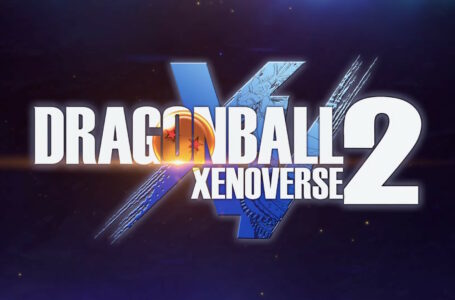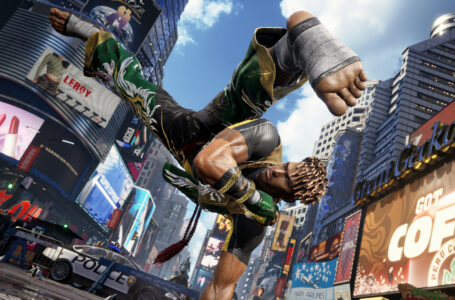The History of Lewd: Dancing Eyes
Dancing Eyes caught me by surprise.
Over the years, I’ve developed a sort of irrational feeling as to which well-known gaming companies are, for want of a better word, “respectable”. By that I don’t mean anything to do with their business practices, general sense of ethics, contributions to charity or anything like that. No, I pretty much use the word “respectable” in this sense to mean the inverse of “likely to put out a game that involves stripping anime girls down to their undies“.
In the grand scheme of things, Namco has always ranked pretty highly on this “respectability” chart for me. They’re responsible for some of the most wholesome, beloved arcade games of all time, including a number of genre-defining titles. They make delightful space and air combat games. And they’re responsible for some fantastic RPGs.
Also in 1996, they put out an arcade game that involves stripping anime girls down to their undies.
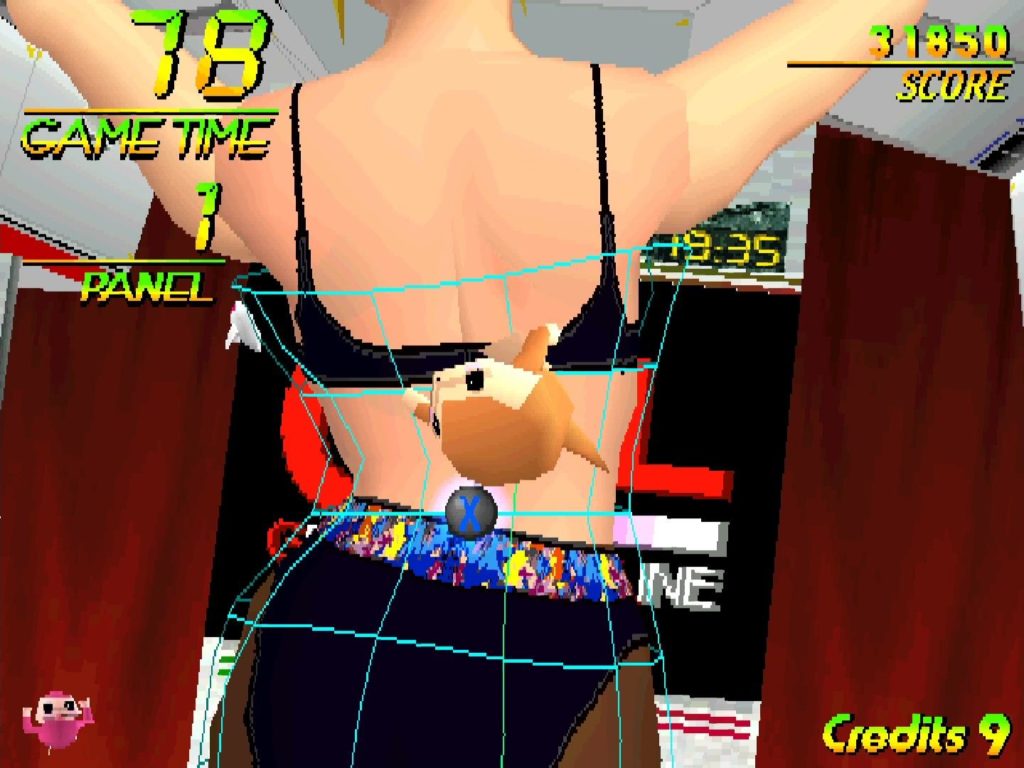
I know, I know, I was surprised as you are. But the evidence is right there in the form of Dancing Eyes, a little-known arcade title from Namco in which you play a tiny little monkey called Urusu-san, whose sole goal in life is to destroy tiles on 3D meshes by drawing boxes around them. Said 3D meshes, more often than not, just happen to be wrapped around the clothing of a series of cute girls — though rather entertainingly for a game of this type, the game doesn’t rely exclusively on lewd scenes, with a number of deliberately comical stages available to play along the way.
Each stage in Dancing Eyes offers you a choice of three different targets. Generally speaking, it’s obvious which ones are the cute girls and which ones are the comedy stages, since the latter appears to focus on an object rather than a character — though sometimes the game will surprise you.
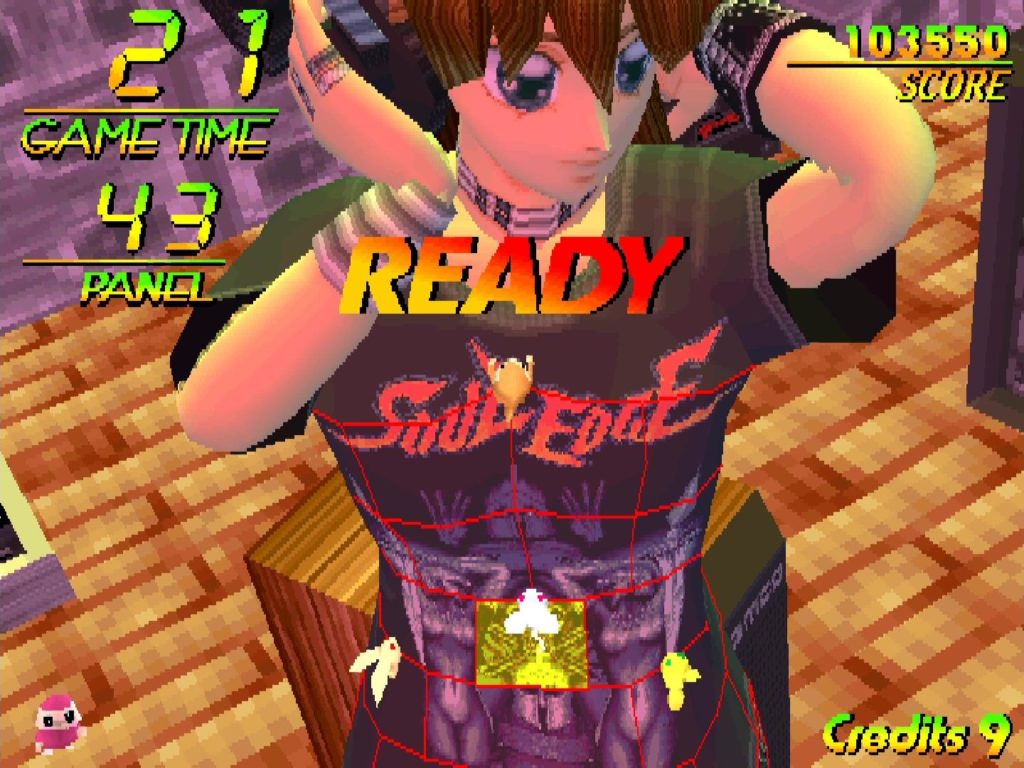
Once into a level, you take control of Urusu-san as he moves around the perimeter of the tiles that make up the stage. By holding down a button, Urusu-san will drop a pin and start leaving a coloured trail behind him; surrounding tiles with this coloured trail will cause them to flash, and releasing the button will destroy all the flashing tiles, with more points on offer the more tiles that Urusu-san destroys at the same time.
Dancing Eyes is often compared to Taito’s Qix and Kaneko’s Gals Panic series, but in practice it’s rather more akin to Konami’s Amidar and Exidy’s Pepper II in that you can only move along set pathways. This makes it feel rather more like a maze game than a line-drawing game, though the use of the button to lay the trails rather than requiring you to collect objects distinguishes it from something like Pac-Man.
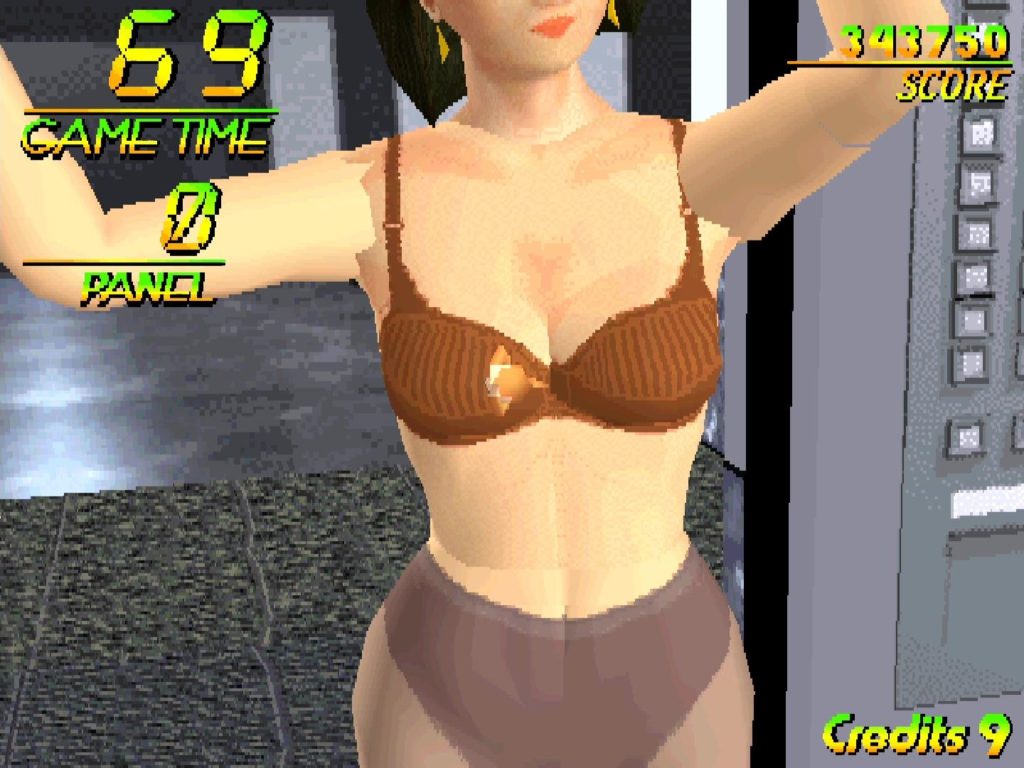
You may be wondering why you shouldn’t just hold the button down all the time. The simple answer is that, of course, you are pursued by enemies as you attempt to clear each stage — and some of those enemies move faster than you while they’re following your coloured trail. This adds a strong feeling of risk versus reward — essential to any good arcade game — by forcing you to make decisions as to whether you go for a hefty tile clear and the potential points it offers, or acknowledge the danger you’re in and simply try to escape.
You can get your own back on the enemies in a few ways. Firstly, clearing tiles while enemies are on their perimeter will destroy them and score you points. Secondly, clearing pulsing coloured tiles on the stage will reward you with power-ups, some of which can be used to attack, paralyse or make the enemies incorporeal and frozen for a short time. As the game progresses, more and more different types of enemy appear — and rather than them all simply making a bee-line for you, each of them behave notably differently, so if you want to succeed in the game you’ll need to understand how they each move and whether they have any special abilities.
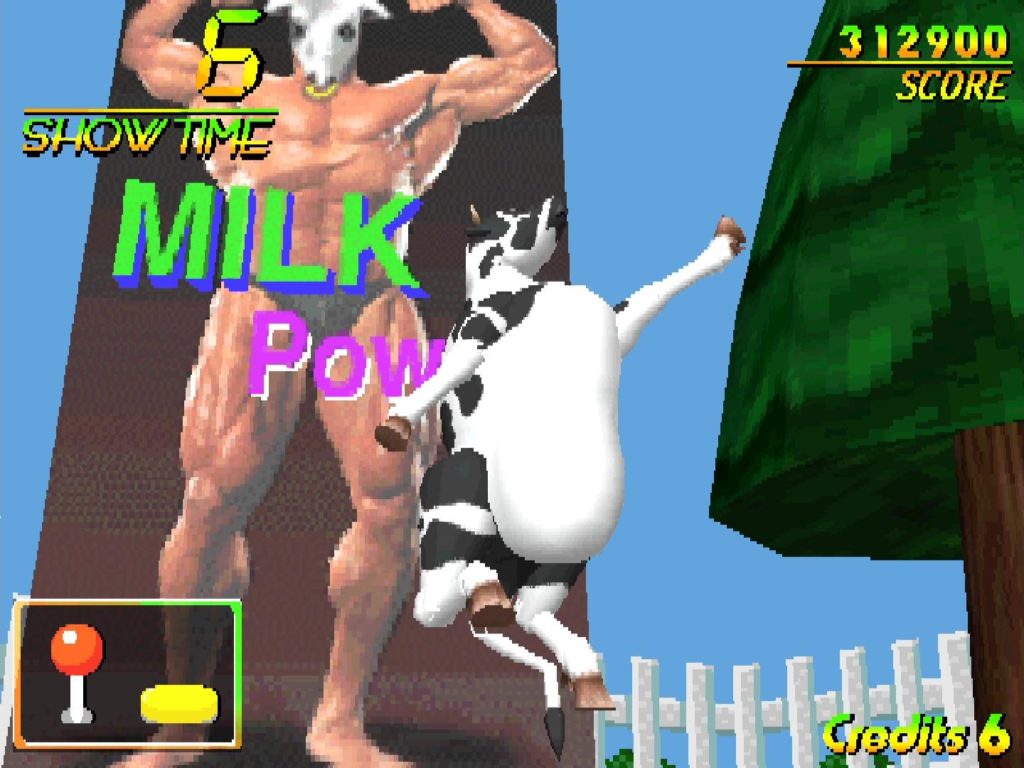
Once you clear a stage, you get 15 seconds of “Show Time”, at which point the main subject of the stage does a little dance or something otherwise entertaining and/or sexy for your delectation, during which you can pan the camera around using the joystick and zoom in on the action by holding the button.
There are plenty of “tastes” covered throughout the game’s cast of lovely ladies; we’ve got school swimsuits, rock chicks in leopard-print undies, angels in leotards, ohohoho-ing bee girls and plenty more besides — including some delightful Namco fanservice along the way. As for the comedy stages, you’ll find yourself encountering cows, aliens, muscle men, a footballing superstar in very tight shorts and a bobblehead figure of a Japanese man that I can only assume is one of Namco’s staff.
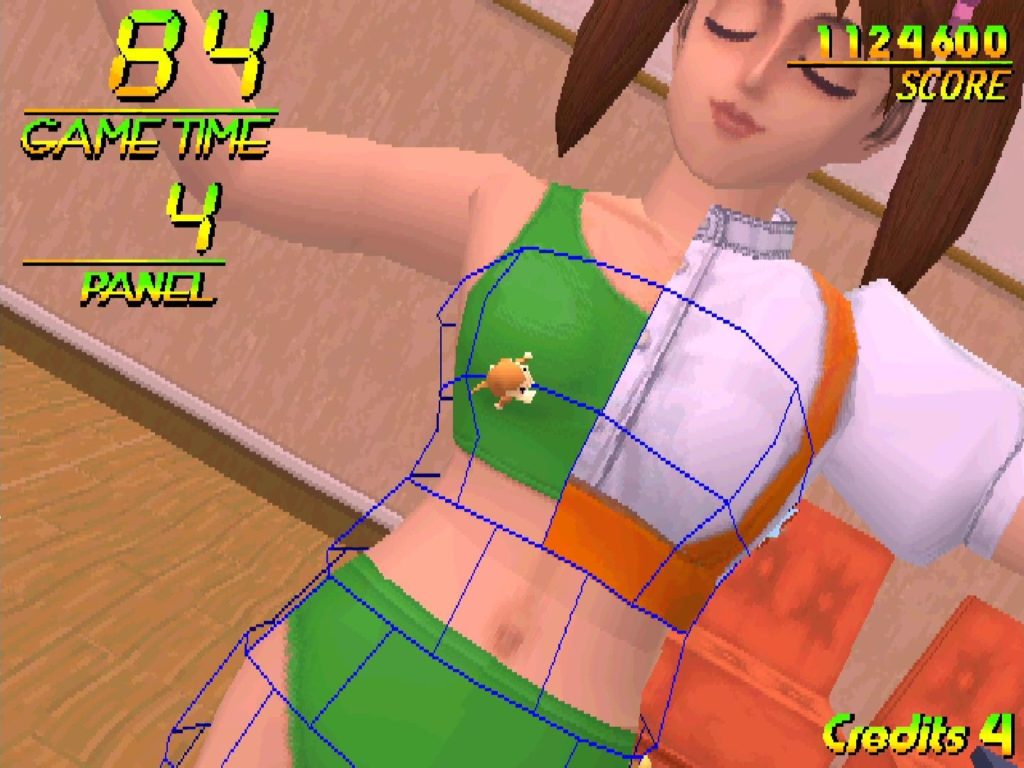
It’s worth noting that, as an arcade game, Dancing Eyes is hard, seemingly in an attempt to prove that a horny gamer is parted from their money almost as readily as a fool is. Of course, if you happen to be playing the game today, you’ll likely be doing so in a situation that doesn’t require a pocketful of change — just be aware that a one-credit clear of this one may take a fair bit of practice!
Dancing Eyes was the work of Masateru Umeda and a team of six others; Umeda is best known as the designer of a cult classic 1995 fighting game called The Outfoxies, which some believe inspired Super Smash Bros’ 2D platforming-style fighting action. The game was quite technologically advanced for the time; it ran on Namco’s System 11 board, which was essentially the guts of a PlayStation — which makes the fact that Dancing Eyes never saw a home port, even in Japan, rather strange — and the characters seen throughout the game made use of motion capture and professional voice actors from the anime industry.
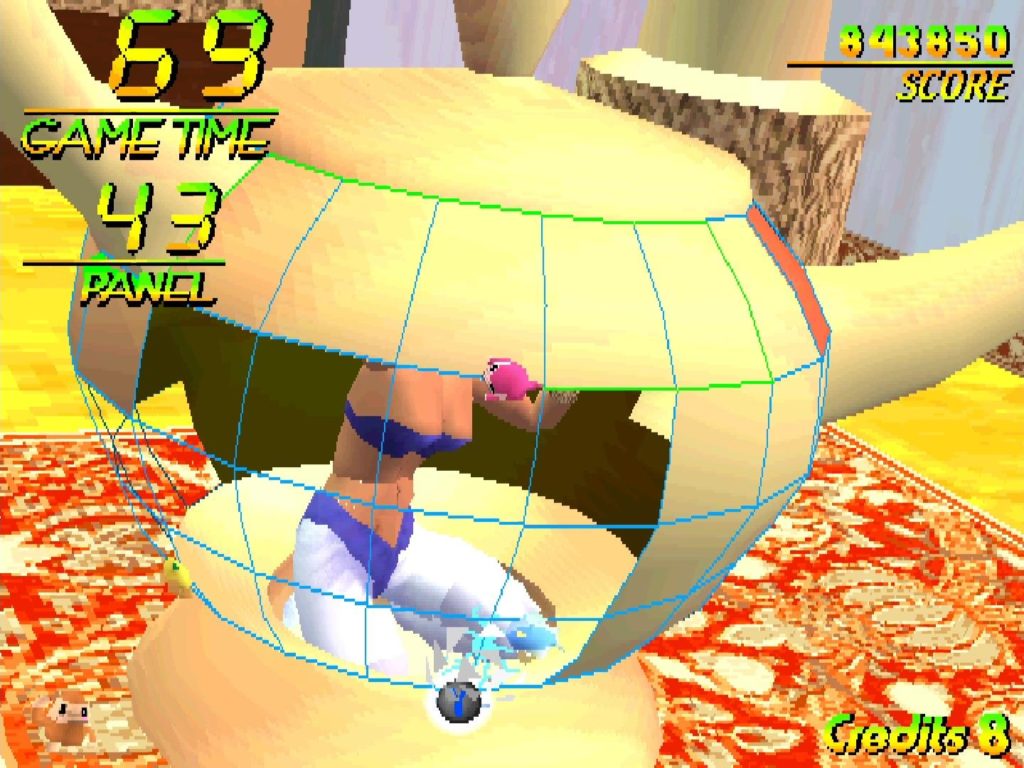
Supposedly the fact that Dancing Eyes was such a departure from Namco’s usually family-friendly style gave the company’s executives a certain amount of pause during development, but they went ahead and let the project proceed. The game was seemingly disliked by a number of publications on its original release, with some deeming it inappropriate for arcades, but it went on to be rather popular; Japan’s Game Machine magazine reported that Dancing Eyes was one of the most popular arcade games in October of 1996. Gals Panic had been around in one form or another since 1990, after all, and that had done well enough to see several sequels — so much for “inappropriate”.
We almost got an HD version of this game, too. Back in 2011, Namco Bandai (as they were known then) announced that they would be bringing Dancing Eyes back as part of its “Namco Generations” series of modernised arcade game remakes for PlayStation 3. This series included Pac-Man Championship Edition DX and Galaga Legions DX, and was originally set to also include a Metro-Cross follow-up called Aero-Cross and the aforementioned version of Dancing Eyes.

Both of these projects were cancelled, sadly, with people attributing this to the overall failure of the Namco Generations project despite the popularity of Pac-Man Championship Edition DX in particular. It seems that Namco just lost interest in the project as a whole for some reason — later ports of Pac-Man Championship Edition DX even removed the “Namco Generations” branding.
Some lay the blame for the lack of our Dancing Eyes HD remaster firmly at the feet of the western games press. Kotaku, GamesRadar and Engadget all posted somewhat disparaging articles about the prospect of the game’s new PlayStation 3 version; by contrast, Japanese publication 4Gamer was much more positive about the title, showing particular interest in how the game would implement the PlayStation Move controller, and sharing a number of nice-looking screenshots that demonstrated how the update remained true to the original while sharpening things up nicely and eliminating that trademark PlayStation/System 11 visual jankiness. But sadly, it was not to be.

Dancing Eyes is by no means an all-time classic of arcade history by any means — it’s just a little bit too hard to be truly fun in its later stages, even with credit-feeding — but it is a shame that we never got to see that HD remaster, which could have quite easily been rebalanced for home play.
More than anything, though, it remains thoroughly interesting as a rare example of Namco delving into lewd territory. Plus it’s always fun to try an arcade game relatively few people have ever heard of, huh?
Join The Discussion
Rice Digital Discord
Rice Digital Twitter
Rice Digital Facebook
Or write us a letter for the Rice Digital Friday Letters Page by clicking here!
Disclosure: Some links in this article may be affiliate links, which means we may earn a small commission if you make a purchase after clicking on them. This is at no additional cost to you and helps support Rice Digital!
- Letter from the Editor: passing the torch - June 30, 2023
- Super Woden GP 2 is looking promising - June 30, 2023
- Inti Creates is making a 32 bit-style Love Live action platformer - June 26, 2023





